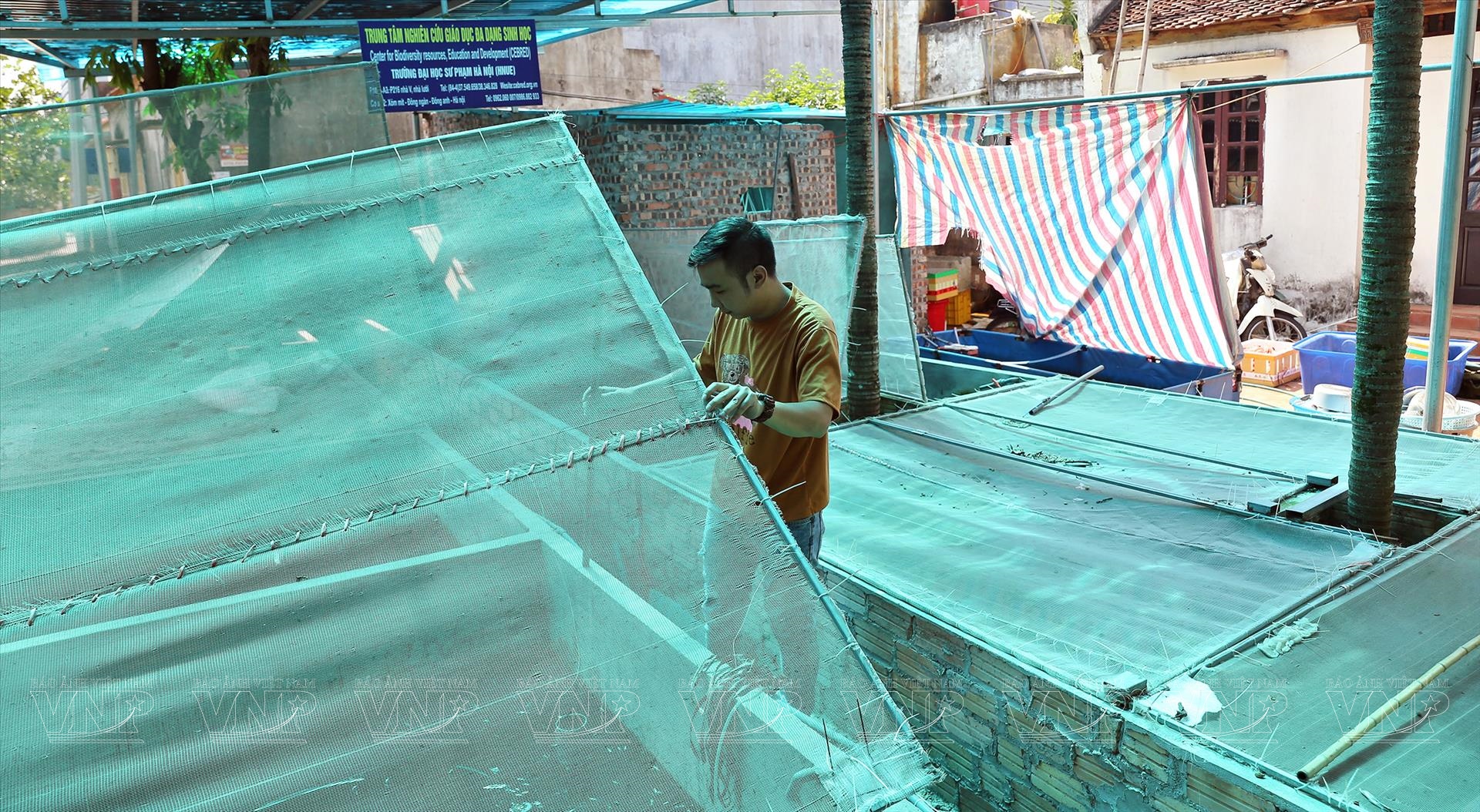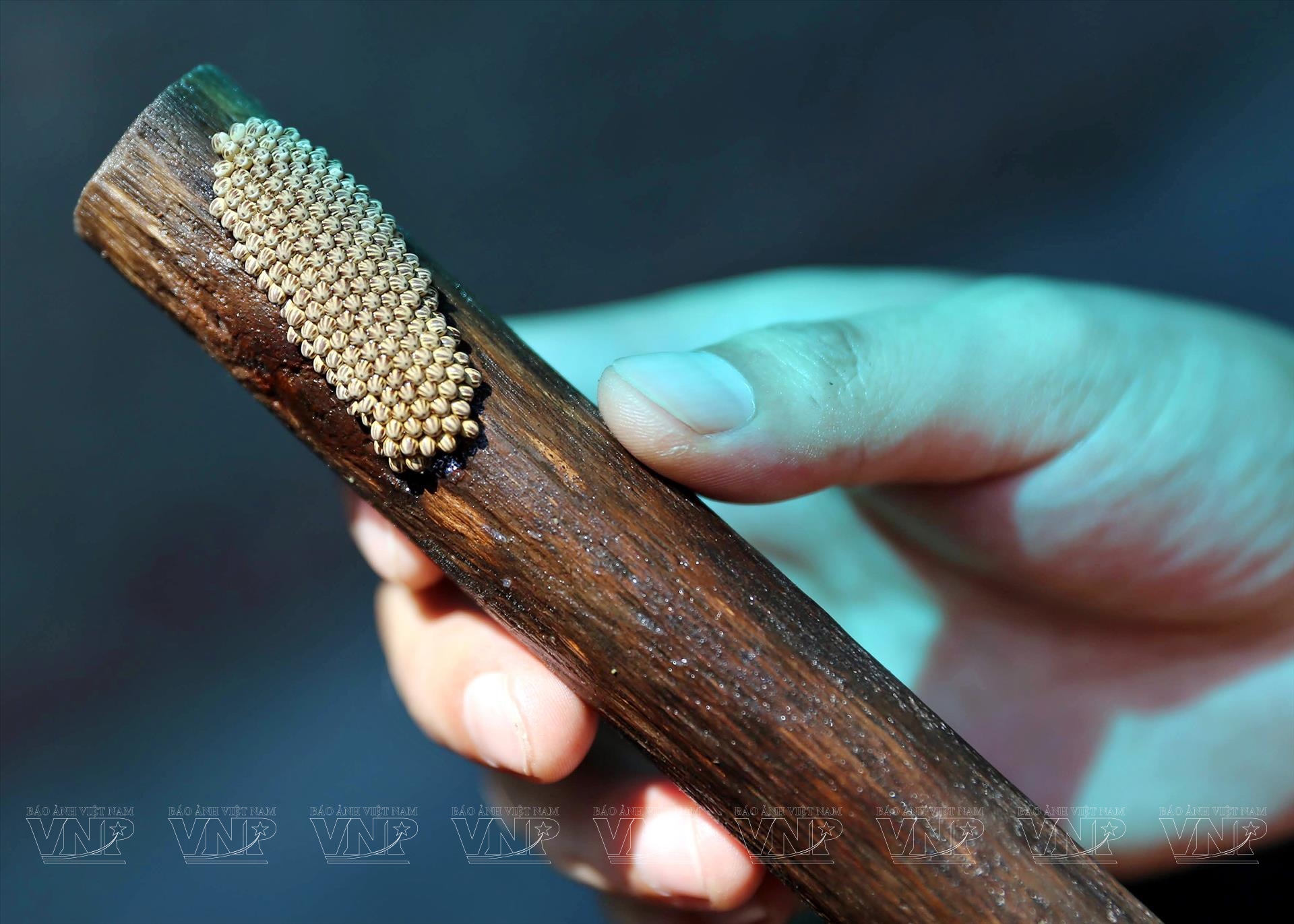Raising Giant Water Bugs in Hanoi
Many households in Hanoi have invested in raising ca cuong (giant water bugs) because they recognized both the value and the expansive consumer market for ca cuong.
Ca cuong, also known as toe-biters or electric light bugs, are insects belonging to the Hemiptera species. They are found in freshwater habitats across the globe. Ca cuong have elongated, flattened bodies, typically brown or black in color. They possess a pair of short forewings and large hind wings adapted for swimming. These insects use their proboscis to pierce and suck the fluids from prey, which includes a variety of small animals like insects, larvae, and small fish.
Ca cuong also serve as a significant food source for humans. In some cultures, they are considered a delicacy. These bugs can be prepared in various ways, including frying, grilling, and stewing. In Vietnam, ca cuong are most notably recognized for their use as a seasoning in dishes such as banh cuon (steamed rolled pancakes) and bun cha (vermicelli with grilled pork and fresh herbs).
Due to changing environmental conditions, wild populations of ca cuong are gradually disappearing. For a prolonged period, sightings of ca cuong outside of the wilderness in Vietnam were rare. At present, this species, revered as a delicacy by the Vietnamese, is flourishing and reproducing successfully in the ca cuong farm of Hoang Anh (located in the Mit Neighborhood, Dong Ngan Village, Dong Anh District, Hanoi).
Hoang Anh uses a closed-loop ca cuong farming model, overseeing the entire process from breeding to product distribution. He breeds the bugs himself, ensuring top-notch quality. Ca cuong tanks can be constructed from various materials such as cement, plastic, or metal, with the tank size tailored to accommodate the number of bugs being raised. To maintain a clean water source for breeding, farmers must regularly change the water and clean the tanks.
According to Hoang Anh, raising ca cuong is not excessively challenging or laborious, but it demands diligence due to the species' wild nature. Therefore, farmers need not disturb the tanks excessively but must maintain constant observation to prevent situations where ca cuong cannibalize each other or other tank inhabitants perish. Ca cuong exclusively consume fresh food, eschewing dead organisms.
Ca cuong larvae hatch from eggs and are subsequently raised in tanks. Once they reach a certain size, these larvae molt into nymphs. Mature ca cuong, after completing the nymph stage, are transferred to separate tanks and fed small fish, shrimp, and insects.
At present, consumers primarily recognize processed products derived from ca cuong, such as fried, grilled, or steamed dishes, owing to the high protein and lipid content in ca cuong meat and eggs. However, the most valuable component of a ca cuong is its oil sac (located in male ca cuong).
On the back of a male ca cuong are two small tubes called oil sacs, which are white in color and highly fragrant. Many individuals painstakingly extract oil, storing it in sealed containers, and using 1-2 drops each time to enhance the flavor of Vietnamese dishes. The primary products of Hoang Anh's ca cuong farm include commercial Ca cuong and ca cuong oil. Commercial ca cuong are sold to restaurants, eateries, and consumers, while ca cuong oil finds applications in traditional medicine and cosmetics.
Hoang Anh's ca cuong farm serves as a quintessential model for efficient ca cuong farming. His model has been studied and adopted by many, thereby contributing to the advancement of the ca cuong farming industry in Vietnam./.
By Cong Dat/VNP Translated by Hong Hanh












